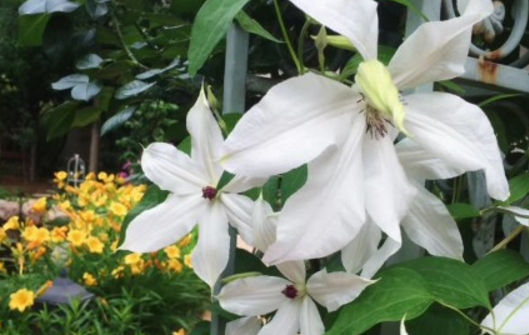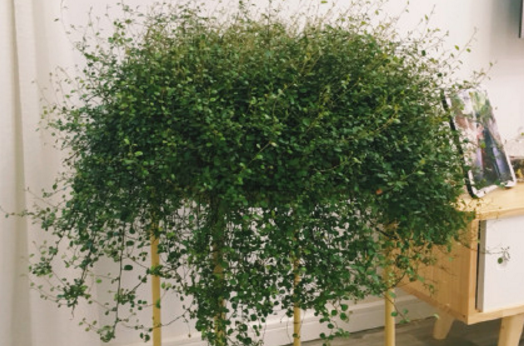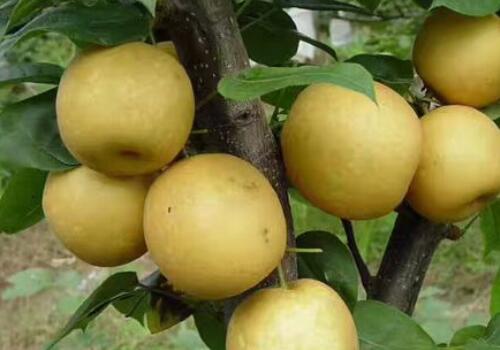Culture methods and matters needing attention of clematis of Ranunculaceae? Taboos on farming in winter? The difference between rotor lotus and rotor lotus?
Clematis like fertile, well-drained alkaline loam, avoid stagnant water, so clematis culture methods and matters needing attention? Taboos on farming in winter? The difference between rotor lotus and rotor lotus? It is understood that clematis has strong cold resistance and can withstand the low temperature of-20 ℃. But often suffer from red spiders and other leaf-eating harm, need to strengthen ventilation, the summer is relatively dry, if the soil can not retain water, the plant is very easy to die.

First, the culture methods and matters needing attention of clematis?
Soil:
Clematis prefer alkaline soils with good drainage and loose and fertile soils.
Watering:
It is very afraid of waterlogging, so in order to avoid root rot, the amount of water must be less, and good drainage measures should be taken during the rainy season to avoid root rot caused by too much water.
Lighting:
It can be placed in a sunlit place from autumn to next spring, without taking any shading measures, shading when the summer sun is strong, strong light will cause its leaves to turn yellow, which is not conducive to its growth and development.
Fertilization:
Clematis is not strict about fertilization, as long as it is applied every 15 days or so when the growth is exuberant.
Note:
1. Pruning: it is irregular to prune it. Generally, it will go into dormancy in autumn and winter. At this time, it is best to prune, and the seedlings can be cut off, leaving relatively large branches.
2, support: to find a good support for it, you can cling to the support as you wish, and it will guide its growth trajectory.
3. Diseases and insect pests: clematis are very afraid of diseases and insect pests. Remove them in time after they are found, and put them in a ventilated position. Do not put them in a closed environment, and trim off the diseased leaves or withered parts, and then use chemicals to remove diseases and insect pests so as not to spread more.
Second, taboos on farming in winter?
1. The temperature should not be too high
Clematis in winter, in 0 to 10 degrees will enter a dormant state, in winter we must control the temperature within this range, can not let the temperature too high, so that it will grow well. In fact, it is also very hardy, and it will be fine at minus 25 degrees. Except for potted plants in North China, it is unnecessary to use some foam or plastic sheeting to keep it warm.
two。 Don't water too much.
When the temperature is not below zero, its watering is generally no different from other seasons, that is, it is not watered when it is not dry. But do not water too much, otherwise it is the easiest to let its roots rot in winter. We can put our fingers into the soil at a depth of 4 to 5 centimeters, and if we feel very wet, we don't need watering. When it is about to freeze in winter, no matter it is potted or planted on the ground, it needs to be watered once and thoroughly at this time, and then no more water will be watered until spring. So keep this in mind in winter. Don't have too much water.
3. Don't fertilize too much.
In general, in order to make their clematis grow better, they will want to give him a little more fertilizer, in fact, this is wrong. We must adhere to the thin fertilizer and apply it frequently so that it can grow better. There are also many kinds of clematis, and many of them are very intolerant to fertilizer. In addition, winter is usually the best season for it to apply fertilizer, so we only need to apply it once a month, so that we can manage it without fertilizing for several months. And also remember that fertilization can not be too thick, it is best to use some thinner fertilizer, so that it can grow in winter.
Third, the difference from the rotor lotus?
1. The difference of root
Both of them belong to Ranunculaceae. Although they are both woody stems and flesh roots, and they climb and grow, there are obvious differences in the shape and color of their roots. First of all, the color is different, the yellowish-brown root is clematis, while the rosette is reddish brown, and secondly, in shape, clematis has slender roots and many whiskers, while rotors have stout and short roots with few whiskers.
2. Flowering characteristics are different.
As a potted clematis, customers can not see the bare roots directly, so we can distinguish whether clematis or not by observing the characteristics of flowering.
Clematis has a large number of flowers, the florescence lasts for a long time, and the color is very bright, in addition, it is also very rich. In comparison, the rotor lotus is extremely adaptable, commonly known as wild, and very hardy, it does not need too much care, and it can spend the winter outdoors in cold weather. It has fewer flowers than clematis, only white or yellow, and there is only one flower on a vine, with very few flowers. So what is rich in design and color is the authentic clematis.
3. Different positions of flowering
In addition to the difference in root and flower color, the third method is to observe the flowering position of rotor lotus and clematis respectively.
The flowers that grow in the axils of the leaves are clematis, while the pedicels of clematis are straight and stout, and the flowers grow at the top of the branches, usually a solitary flower. If you buy clematis with flowers in the axils of each leaf, they are authentic clematis.
In fact, clematis can be distinguished from clematis by observing the morphological characteristics of leaves, but this method of observation is more difficult if it is not an experienced die-hard fan. If we have mastered the above three methods, we can make a correct judgment on whether Clematis is authentic or not.
Time: 2019-03-16 Click:
- Prev

Is the sea grape clan Chiba poisonous? Will it blossom? How do you spend the winter? What is the cutting method?
Chiba likes a warm and humid environment and can grow normally in sunny and semi-shady places, so is it poisonous? Will it blossom? How do you spend the winter? What is the cutting method? According to the data, scientists have found that
- Next

How much is the price of "June Snow" Cuiguan pear seedlings? How many years has it been planted? What are the places of origin? The prospect of development is as follows
Cuiguan pear is a honey pear, also known as June snow, with thin skin, crisp and juicy flesh, thick and tender taste and sweet juice. It was listed 2 to 3 months earlier than Yali pear and Dangshan pear in the north. How much is the Cuiguan pear seedling? How many years has it been planted? What are the places of origin? What are the prospects for development?
Related
- Fuxing push coffee new agricultural production and marketing class: lack of small-scale processing plants
- Jujube rice field leisure farm deep ploughing Yilan for five years to create a space for organic food and play
- Nongyu Farm-A trial of organic papaya for brave women with advanced technology
- Four points for attention in the prevention and control of diseases and insect pests of edible fungi
- How to add nutrient solution to Edible Fungi
- Is there any good way to control edible fungus mites?
- Open Inoculation Technology of Edible Fungi
- Is there any clever way to use fertilizer for edible fungus in winter?
- What agents are used to kill the pathogens of edible fungi in the mushroom shed?
- Rapid drying of Edible Fungi

